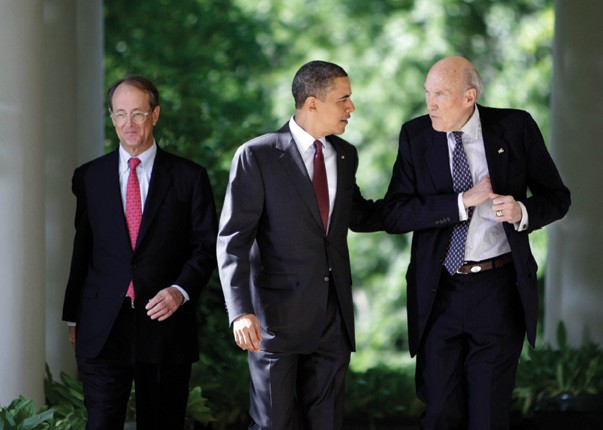“There isn’t a long-term deficit problem,” Baker says. “There’s a health care problem. If health care gets under control, economic growth goes a long way toward solving the deficit.”
6. Focus solutions to solve multiple real problems.
A very small financial speculation or transaction tax, for example, would have two benefits: discouraging useless and often dangerous speculation, and collecting new revenue.
Likewise, a carbon tax—or less straightforwardly, a cap-and-trade system, even a higher gasoline tax—would combat climate change, encourage efficiency, enhance security, and raise revenues to reduce long-term debt.
7. Make solutions progressive to reduce growing inequality.
The BS plan relies on budget cuts more than revenue increases to reduce deficits. University of California at Berkeley economist Brad DeLong calculates that, overall, BS gives the top 1 percent of income earners a $7,000 a year tax cut but “an average $600-a-year tax increase for the working and middle classes.” It uses much of the tax expenditure savings not to cut deficits but to reduce tax rates—far outside the Commission mandate. The regressive tax burden adds to the disproportionate harm people of modest means will suffer from program cuts and shifting costs.
The crisis stemmed in part from rising inequality and the policies that fostered it, especially financial deregulation. The rich should pay the bulk of any deficit reduction costs: that is proportional to how they benefited and to their ability to pay. And new budget guidelines to reduce deficits should aim to reduce inequality over coming years, as the JS, CC, and OFS plans would do.
8. Help state and local governments with their budget crises.
Despite deep cuts in essential programs and workforces in at least 46 states, the crises continue, according to the Center for Budget and Policy Priorities. Most states can’t run deficits and have limited borrowing power. Between congressional Republican insistence on cutting state aid and Republican governors’ zeal to cut state government, even to the point of rejecting federal high-speed rail investment, state and local cutbacks will intensify hardships for the vulnerable, and slow recovery of jobs and incomes.
9. Public opinion is not aligned with the deficit-obsessed political, media, and business elite.
Democrats lost badly in the midterms largely because too many working- and middle-class Americans did not see Obama and congressional Democrats delivering any tangible help for them. Some voters shifted to Republicans out of concern with deficits and big government, but a November NBC/Wall Street Journal poll showed little support for the BS deficit plan. In Democracy Corps polling, 67 percent of voters wanted both growth-producing investment and deficit cuts, while 52 percent wanted Congress to fight against corporate interests and for the middle class rather than focus on controlling spending, deficits, and taxes.
10. Tough choices.
They’re not over targets for debt or spending as a share of GDP, nor how deeply to cut the incomes and security of the working and middle classes. The tough choices are over values, such as giving reality to a second bill of rights. It’s over the question plaintively posed by songwriter Florence Reece to the coal miners of Harlan County as they faced the choice of being “a union man or a thug”: Which side are you on?
This article was originally published in the December 15 edition of In These Times.



















